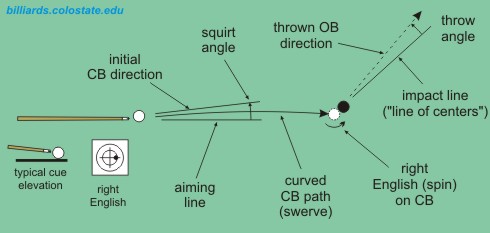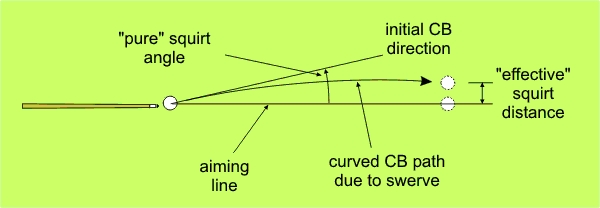Why do you think there is a contradiction? The point of NV B.7 is to show that the CB's path does not turn after the CB has begun to roll (even with sidespin), assuming the table is level and the cloth is in good condition and clean (and the ball's weight is balanced).What you are saying in this post seems to contradict what you have said in this video, http://billiards.colostate.edu/normal_videos/new/NVB-7.htmSwerve happens sooner with follow shots than with swerve shots, so the CB does not swing out as much, making it appear there is less squirt (which is not the case) or more swerve (which really isn't the case either) ... the swerve just occurs earlier.
There is both squirt and swerve in that video, and I did correct my aim for them, but they occur in the first few inches of the shot since the speed is so slow. Squirt occurs immediately off the tip, and swerve occurs only while the CB is sliding (not rolling yet). The amount I had to adjust for the combined effects of squirt and swerve was not very much because for the cue, speed, and cue elevation I was using, swerve cancelled most of the squirt (but I did have to adjust a little as predicted by the FHE method for slow, rolling shots).
I hope that makes sense,
Dave

